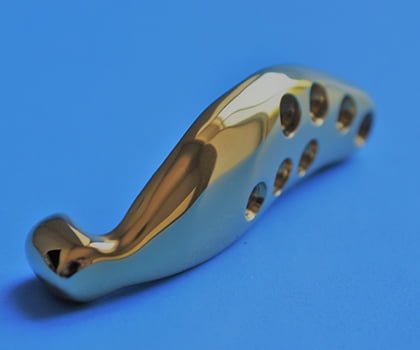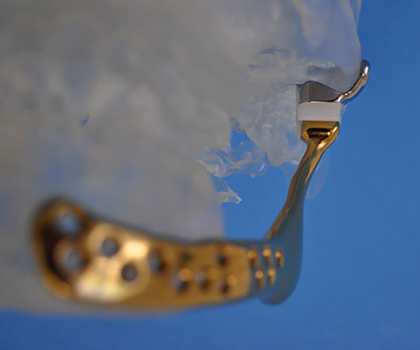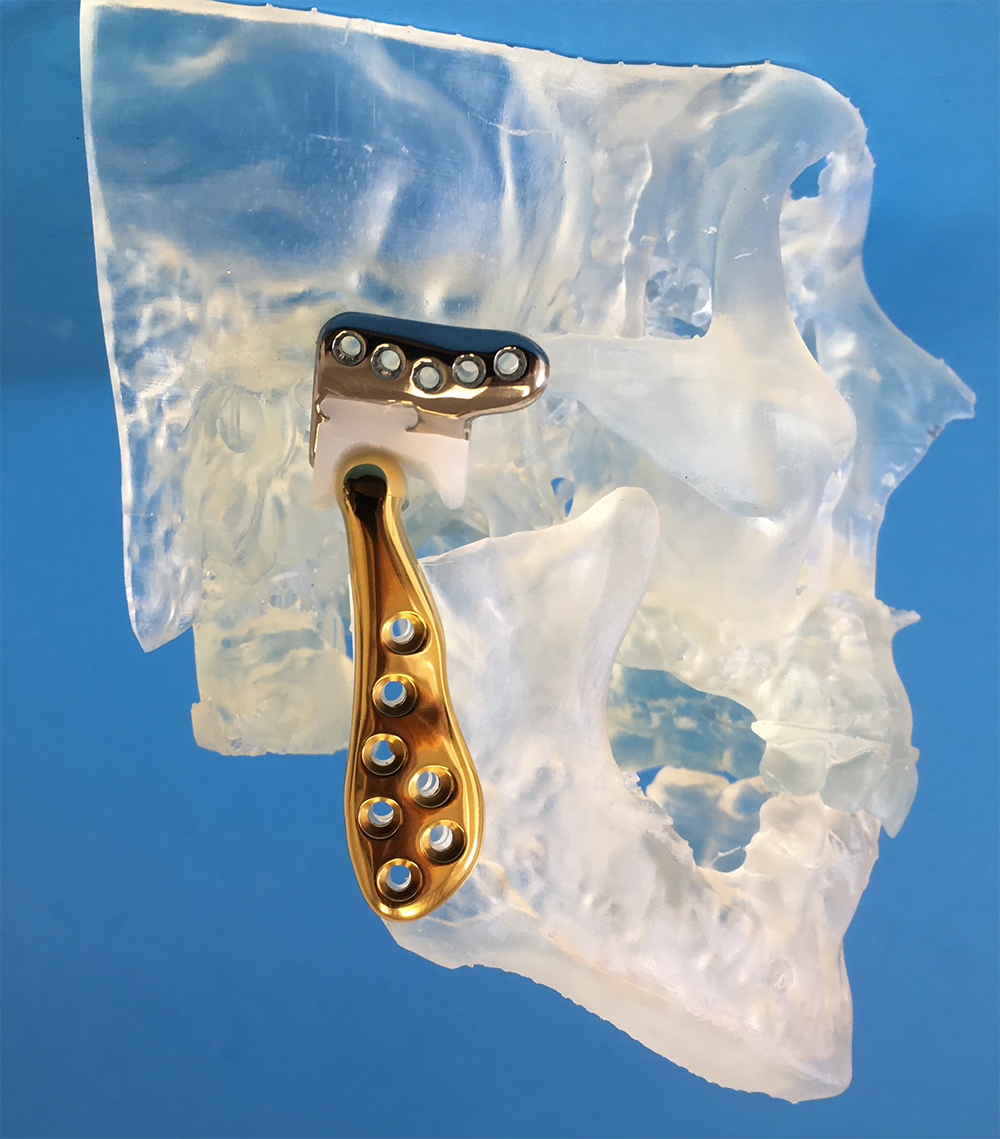Custom fossa component allows for exacting fit
A patient-specific fossa component has the advantage over a standard component in that the implant is in direct contact at each point along the anatomical interface creating stability and reducing micromotion. This also reduces stress within the component by more efficiently transferring joint loads to the bone. In addition, there are certain circumstances in which the patient has anatomical deficits and a standard component cannot be used. All these advantages lead to a more robust and longer-lasting joint replacement solution.Custom ramus component allows fit to irregular mandible
A standard flat surface on the ramus component may not be suited for patients who have irregularly shaped or mutilated skeletal anatomy. Custom components allow for control over the shape of the condylar component, the flexibility of positioning of the screws, and the adaptation of the internal surface. The specific design can be altered to increase fixation or improve positioning of the screws, to accommodate the best bone stock, bone thickness, or to account for the position of the mandibular nerve. If the occlusion can be improved by changing the position of the mandible, the design of the ramus component can be altered accordingly before surgery. Examples include mandibular advancement and lengthening of the posterior vertical height.

 Contact stress (Unit loading, Von Mises) comparison between spherical
Contact stress (Unit loading, Von Mises) comparison between spherical